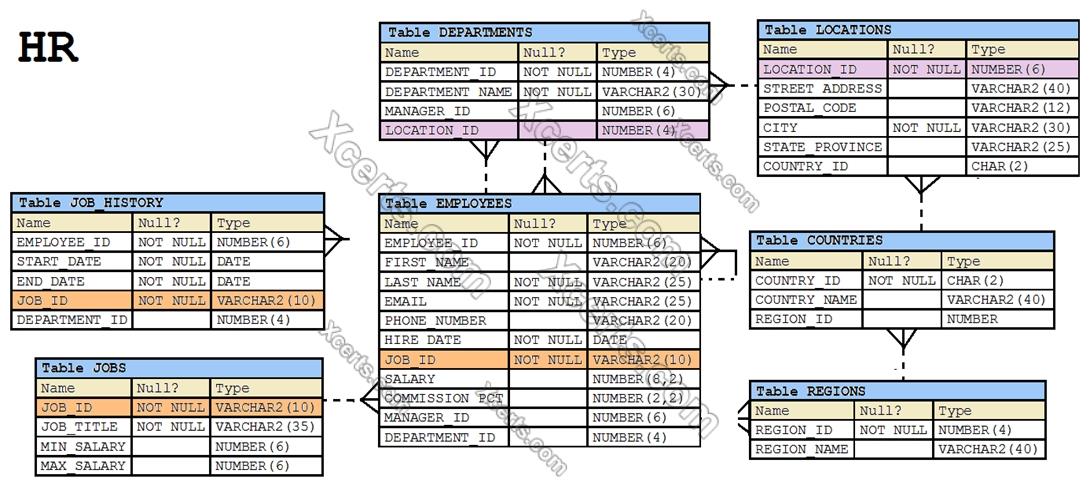View the exhibit and examine the description of the DEPARTMENTS and EMPLOYEES tables.

You wrote this SQL statement to retrieve EMPLOYEE_ID, FIRST_NAME, and DEPARTMENT NAME, for all employees:
SELECT employee_id, first_name, department_name
FROM employees
NATURAL JOIN departments;
The desired output is not obtained after executing the above SQL statement. What could be the reason for this?
- The table prefix is missing for the column names in the SELECT clause.
- The NATURAL JOIN clause is missing the USING clause.
- The DEPARTMENTS table is not used before the EMPLOYEES table in the FROM clause.
- The EMPLOYEES and DEPARTMENTS tables have more than one column with the same column name and data type.
Answer(s): D
Explanation:
Natural join needs only one column to be the same in each table. The EMPLOYEES and DEPARTMENTS tables have two columns that are the same (Department_ID and Manager_ID)